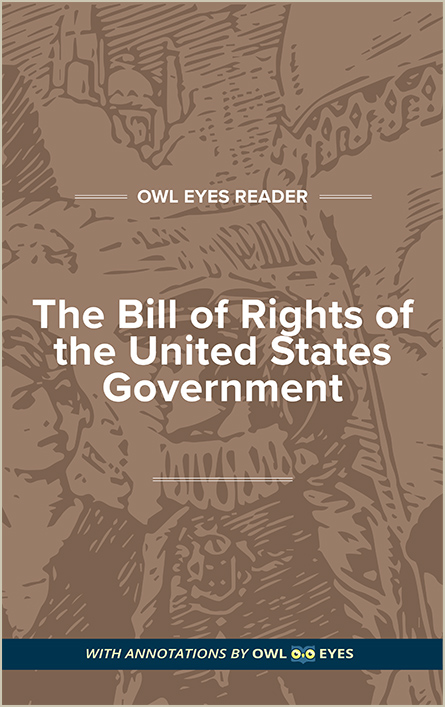- Annotated Full Text
- Publication Date: 1789
- Flesch-Kincaid Level: 22
- Approx. Reading Time: 3 minutes
The Bill of Rights
In his first inaugural address on April 30, 1789, George Washington urged Congress to propose amendments to the Constitution to address concerns regarding the lack of protection for individual liberties in the original Constitution. These concerns came from Thomas Jefferson and other Anti-Federalists, who had argued against the policies of the Federalists for years. The Federalists advocated for a new Constitution with broad federal regulations, whereas the Anti-Federalists argued in support of revising the existing Articles of Confederation to include more personal liberties. The product of this discourse became known as the Bill of Rights, which not only provided essential freedoms to the citizenry but also saved the young country by serving as the first major compromise among divided legislators. The Bill of Rights is a compromise between groups: the Federalists, who wished to ratify an entirely new Constitution, and the Anti-Federalists, who agreed to the Constitution only if the Bill of Rights could be included. The drafting of the Bill of Rights began with James Madison, whom many consider the primary architect of the Constitution as well. The House of Representatives refused to accept revisions to the Constitution, and so Madison, Jefferson, and George Mason proposed seventeen amendments to the House that would be added to the end of the Constitution. The House approved them on August 24, 1789. The amendments were revised by the Senate, and after Congress approved twelve amendments on September 25, 1789, they were sent to the states for ratification. Over two years later, ten amendments were ratified, forming the Bill of Rights.
- Annotated Full Text
- Publication Date: 1789
- Flesch-Kincaid Level: 22
- Approx. Reading Time: 3 minutes

